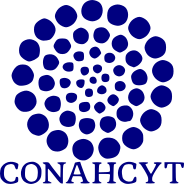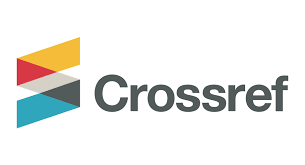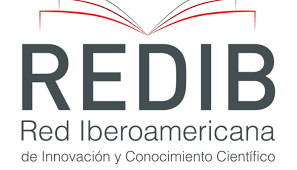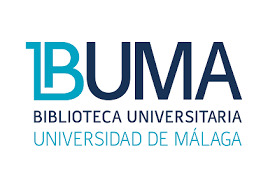Establecimiento in vitro de pascuita (Euphorbia leucocephala Lotsy) e inducción de callos y tallos bajo diferentes colores de luz led
DOI:
https://doi.org/10.18387/polibotanica.58.13Palabras clave:
Euphorbia leucocephala, cultivo in vitro, Organogenesis indirecta, Iluminación LEDResumen
La pascuita (Euphorbia leucocephala Lotsy) es una especie vegetal con uso ornamental durante la temporada navideña. Si bien su producción en masa ha ido en aumento, la nula existencia de variedades agronómicas y de protocolos de reproducción vegetativa eficientes son los principales retos que envuelven a esta especie. La generación de un protocolo de reproducción in vitro por organogénesis indirecta representa un primer paso para abordar ambos retos. El objetivo del presente trabajo fue evaluar los efectos de tres colores de luz LED y diferentes concentraciones de benciladenina (BA) y ácido indol-3-acético (AIA) sobre la formación de callos de pascuita y posterior generación de tallos adventicios. Bajo un experimento factorial se probó el efecto de 9 y 12 µM de BA; 5, 8 y 11 µM de AIA agregados al medio de cultivo y luz LED blanca, roja y azul (10 µmol m-2 s-1 y 16 h fotoperiodo), sobre la generación de callos y posterior formación de tallos adventicios en fragmentos de verticilo de pascuita establecidos en medio WPM. Los resultados mostraron que es posible generar callos bajo todos los tratamientos evaluados, la luz roja aceleró este proceso. Los callos formados con 5 µM de AIA y 9 o 12 µM BA fueron los primeros en formar tallos adventicios y únicamente bajo luz roja se observó un 100% de callos con tallos formados. El número y longitud de los tallos estuvo en función de las interacciones entre los tratamientos hormonales y luminosos. Se concluye que es posible generar callos bajo cualquiera de los tratamientos hormonales y luminosos evaluados y que la luz roja acelera la formación de callos y tallos adventicios de pascuita con características deseables.
Referencias
Ahmad, I., Hussain, T., Ashraf, I., Maryam, M. N., Rafay, M., & Iqbal Muhammad. (2013). Lethal effect of secondary metabolites on plant tissue culture. American-Eurasian Project is under review View project Local fruit and vegetable drying techniques to reduce malnutrition View project. American-Eurasian J. Agric. & Environ. Sci., 13(4), 539–547. https://doi.org/10.5829/idosi.aejaes.2013.13.04.1975
Alallaq, S., Ranjan, A., Brunoni, F., Novák, O., Lakehal, A., & Bellini, C. (2020). Red Light Controls Adventitious Root Regeneration by Modulating Hormone Homeostasis in Picea abies Seedlings. Frontiers in Plant Science, 11. https://doi.org/10.3389/fpls.2020.586140
Aljibouri, A. M., Yakoub Zokian, S. A., & Almusawi, A. H. (2014). Response of four medical plants of Euphorbia species in callus initiation in vitro. Journal of Biotechnology Research Center, 8(1), 66–71.
Amente, G., & Chimdessa, E. (2021). Control of browning in plant tissue culture: A review. Journal of Scienfitic Agriculture, 5, 67–71. https://doi.org/10.14393/BJ-v34n1a2018-36311
Amos Samkumar, R., Premnath, D., & David Paul Raj, R. S. (2019). Strategy for early callus induction and identification of anti-snake venom triterpenoids from plant extracts and suspension culture of Euphorbia hirta L. 3 Biotech, 9(7). https://doi.org/10.1007/s13205-019-1790-9
Azofeifa, Á. (2009). Problemas de oxidación y oscurecimiento de explantes in vitro. Agronomía Mesoamericana, 20(1), 153–175. http://www.redalyc.org/articulo.oa?id=43711514016
Budiarto, K. (2010). Spectral qualitu affects morphogenesis on anthurium plantlet during in vitro culture. Agrivita volume, 32(3), 234–240.
Catapan, E., Luís, M., Da Silva, B., Moreno, N., & Viana, A. M. (2002). Micropropagation, callus and root culture of Phyllanthus urinaria (Euphorbiaceae). Plant Cell, Tissue and Organ Culture, 70, 301–309.
Cavallaro, V., Pellegrino, A., Muleo, R., & Forgione, I. (2022). Light and Plant Growth Regulators on In Vitro Proliferation. Plants, 11(7). https://doi.org/10.3390/plants11070844
Centeno, M. L., Rodriguez, A., Feito, I., Fermindez, B., & Weiler, E. W. (1996). Relationship between endogenous auxin and cytokinin levels and morphogenic responses in Actinidia deliciosa tissue cultures. Plant Cetl Reports, 16, 58–62.
Chung, J. P., Huang, C. Y., & Dai, T. E. (2010). Spectral effects on embryogenesis and plantlet growth of Oncidium “Gower Ramsey”. Scientia Horticulturae, 124(4), 511–516. https://doi.org/10.1016/j.scienta.2010.01.028
Cybularz-Urban, T., Hanus-Fajerska, E., & Bach, A. (2015). Callus induction and organogenesis in vitro of Cattleya from protocorms-like bodies (PLBs) under different light conditions. Acta Sci. Pol. Hortorum Cultus, 14(6), 29–38. www.acta.media.pl
D´Onofrio, C., & Morini, S. (2001). Effect of light quality on in vitro production of callus explants of three Poinsettia cultivars. En Acta Hort (Vol. 560).
Daud, N., Faizal, A., & Geelen, D. (2013). Adventitious rooting of Jatropha curcas L. is stimulated by phloroglucinol and by red LED light. In Vitro Cellular and Developmental Biology - Plant, 49(2), 183–190. https://doi.org/10.1007/s11627-012-9486-4
Dutta Gupta, S., & Sahoo, T. K. (2015). Light emitting diode (LED)-induced alteration of oxidative events during in vitro shoot organogenesis of Curculigo orchioides Gaertn. Acta Physiologiae Plantarum, 37(11). https://doi.org/10.1007/s11738-015-1990-9
Gil, C. S., Kwon, S. J., Jeong, H. Y., Lee, C., Lee, O. J., & Eom, S. H. (2021). Blue light upregulates auxin signaling and stimulates root formation in irregular rooting of rosemary cuttings. Agronomy, 11(9). https://doi.org/10.3390/agronomy11091725
Ikeuchi, M., Sugimoto, K., & Iwase, A. (2013). Plant callus: Mechanisms of induction and repression. Plant Cell, 25(9), 3159–3173. https://doi.org/10.1105/tpc.113.116053
Jeong, B. R., & Sivanesan, I. (2018). Impact of light quality and sucrose on adventitious shoot regeneration and bioactive compound accumulation in Ajuga multiflora Bunge. Scientia Horticulturae, 236, 222–228. https://doi.org/10.1016/j.scienta.2018.03.056
Kohler, K.-H., Dsrfler, M., Gbring, H., & Moritz-Arndt, E. (1980). The Influence of Light on the Cytokinin Content of Amaranthus Seedlings. biologia plantarum (PRAHA), 22(2), 128–134.
Li, C. X., Xu, Z. G., Dong, R. Q., Chang, S. X., Wang, L. Z., Khalil-Ur-Rehman, M., & Tao, J. M. (2017). An RNA-seq analysis of grape plantlets grown in vitro reveals different responses to blue, green, red LED light, and white fluorescent light. Frontiers in Plant Science, 8(JANUARY). https://doi.org/10.3389/fpls.2017.00078
Lima, E. C., Paiva, R., Cravo Nogueira, R., Pereira Soares, F., Bucsam Emrich, E., & Naves Silva, A. Á. (2008). Callus induction in leaf segments of Croton urucurana Baill. Ciênc. agrotec., 32(1), 17–22.
Manivannan, A., Soundararajan, P., Halimah, N., Ko, C. H., & Jeong, B. R. (2015). Blue LED light enhances growth, phytochemical contents, and antioxidant enzyme activities of Rehmannia glutinosa cultured in vitro. Horticulture Environment and Biotechnology, 56(1), 105–113. https://doi.org/10.1007/s13580-015-0114-1
Martínez-Villegas, Y. M., Andrade-Rodríguez, M., Colinas-León, M. T., Villegas-Torres, Ó. G., Castillo-Gutiérrez, A., & Alia-Tejacal, I. (2015). Culture media inorganic salts effect on pascuita (Euphorbia leucocephala Lotsy) growth. Rev. Fitotec. Mex, 38(4), 369–374.
Mostafa, H. H. A., Wang, H., Song, J., & Li, X. (2020). Effects of genotypes and explants on garlic callus production and endogenous hormones. Scientific Reports, 10(1). https://doi.org/10.1038/s41598-020-61564-4
Pawłowska, B., Żupnik, M., Szewczyk-Taranek, B., & Cioć, M. (2018). Impact of LED light sources on morphogenesis and levels of photosynthetic pigments in Gerbera jamesonii grown in vitro. Horticulture Environment and Biotechnology, 59(1), 115–123. https://doi.org/10.1007/s13580-018-0012-4
Perera, D., & Trader, B. W. (2010). Poinsettia “Prestige Red” (Euphorbia pulcherrima) In Vitro Propagation. HortScience, 45(7), 1126–1128. http://www.ecke.com/Search/Variety_Results.
Pickens, K. A., Cheng, Z. M., & Trigiano, R. N. (2005). Axillary bud proliferation and organogenesis of Euphorbia pulchurrima Winter Rose. In Vitro Cellular and Developmental Biology - Plant, 41(6), 770–774. https://doi.org/10.1079/IVP2005706
Poudel, P. R., Kataoka, I., & Mochioka, R. (2008). Effect of red- and blue-light-emitting diodes on growth and morphogenesis of grapes. Plant Cell, Tissue and Organ Culture, 92(2), 147–153. https://doi.org/10.1007/s11240-007-9317-1
Shen, Y., Fan, K., Wang, Y., Wang, H., Ding, S., Song, D., Shen, J., Li, H., Song, Y., Han, X., Qian, W., Ma, Q., & Ding, Z. (2022). Red and Blue Light Affect the Formation of Adventitious Roots of Tea Cuttings (Camellia sinensis) by Regulating Hormone Synthesis and Signal Transduction Pathways of Mature Leaves. Frontiers in Plant Science, 13. https://doi.org/10.3389/fpls.2022.943662
Sobańska, K., Jedryszek, P., Kern, C., Basińska-Barczak, A., Pniewski, T., & Long, S. P. (2023). An efficient indirect plant regeneration from shoot apical meristem (SAM) derived embryogenic callus of Miscanthus × giganteus. Biocatalysis and Agricultural Biotechnology, 47, 102576. https://doi.org/https://doi.org/10.1016/j.bcab.2022.102576
Younas, M., Drouet, S., Nadeem, M., Giglioli-Guivarc’h, N., Hano, C., & Abbasi, B. H. (2018). Differential accumulation of silymarin induced by exposure of Silybum marianum L. callus cultures to several spectres of monochromatic lights. Journal of Photochemistry and Photobiology B: Biology, 184, 61–70. https://doi.org/10.1016/j.jphotobiol.2018.05.018
Yu, Y., Qin, W., Li, Y., Zhang, C., Wang, Y., Yang, Z., Ge, X., & Li, F. (2019). Red light promotes cotton embryogenic callus formation by influencing endogenous hormones, polyamines and antioxidative enzyme activities. Plant Growth Regulation, 87(2), 187–199. https://doi.org/10.1007/s10725-018-0461-x
Descargas
Publicado
Número
Sección
Licencia

Polibotánica por Departamento de Botánica de la Escuela Nacional de Ciencias Biológicas del Instituto Politécnico Nacional se distribuye bajo una Licencia Creative Commons Atribución-NoComercial-CompartirIgual 4.0 Internacional.




















